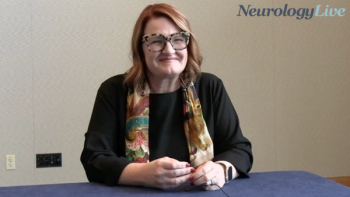
Stroke: A Looming Threat for Younger Adults
Steven Shapiro, MD, medical director for Stroke Services at RWJBarnabas Health’s Cooperman Barnabas Medical Center, highlighted some of the reasons why stroke occurs in younger adults under the age of 45 and the risk factors as well as preventative measures this population should be aware of.
Recent studies and medical reports have indicated a rise in stroke among young adults under the age of 45, reaching 10% to 15% and a stark departure from the more senior age group strokes typically affect the most.1 While this age group is generally considered at a lower risk for such issues, the numbers continue to rise.
This alarming shift has medical professionals like me urging younger people to be aware of the risk factors and take preventative measures. There may be several reasons fueling this trend:
- Health conditions: Increased prevalence of certain medical conditions prematurely affecting younger people, such as obesity, high blood pressure, diabetes, and high cholesterol, have long been well-established risk factors for stroke.
- Lifestyle factors: Smoking, heavy drinking, and illicit drug use all play a role.
- Environment: The environment in which an individual lives can’t be discounted. For instance, chronic toxic exposure can lead to health consequences, which may increase stroke risk.
- Family history: Genetics also play a role when it comes to strokes, increasing the likelihood of them occurring, especially in combination with other medical conditions such as obesity, hypertension, certain blood clotting disorders, and diabetes.
- Technology: Technological advances have made it possible to detect strokes, including ischemic ones, earlier and earlier in patients, which has contributed to the rise in reported cases.
Recognizing the Warning Signs and How to BE-FAST
With prompt recognition and treatment of strokes, decades of disability-free years can be avoided, which is especially important for younger individuals. In the stroke community, we have a saying, “Time is brain.” To put this into perspective, studies have shown that, for every minute that passes in a stroke, approximately 1.9 million neurons become irreversibly injured.2 Every 30 minutes of delays in treating suddenly interrupted blood flow to the brain that caused a stroke adds five years of age to the brain and a 30 percent lower chance of a good functional recovery.
Recognizing the common warning signs of a stroke is critical and is where the “BE-FAST” acronym comes in to identify stroke symptoms:
- B for Balance: Is there a sudden imbalance due to the inability to coordinate body parts?
- E for Eyes: Is there a sudden vision loss in one eye or an inability to see half the room?
- F for Face: Does one side of the face droop?
- A for Arms (or Legs): When raising both arms, does one drift downward? Is one side suddenly weaker than the other?
- S for Speech: Is the person’s speech slurred or otherwise strange? Can the person no longer speak or have significant difficulty creating speech?
- T for Time: If any of these symptoms are present, time is of the essence. Call 911 or get to the nearest emergency room immediately.
Seek Stroke Treatment at a Comprehensive Stroke Center
Proper education on what stroke warning signs look like comes with lifesaving benefits. However, getting treatment at the right hospital, especially any of the country’s 297 designated Comprehensive Stroke Centers, can make all the difference in minimizing or reversing damaging effects. Hospitals with this designation provide state-of-the-art stroke care and specialize in advanced therapies and surgery techniques that quickly restore blood flow to the brain when every moment counts. Strokes that aren’t treated immediately can cause severe lifelong disabilities and cognitive, language, and mobility impairments.
Know the Risks, Make a Plan, and Talk to Your Doctor
Young adults can significantly reduce their risk of stroke by taking a proactive approach to their health and knowing the warning signs. Making healthy lifestyle choices regarding diet and exercise, managing underlying health conditions, and talking to their doctor about proactive measures they can take to minimize stroke risk are all good places to start.
REFERENCES
1. Bukhari S, Yaghi S, Bashir Z. Stroke in Young Adults. J Clin Med. 2023;12(15):4999. Published 2023 Jul 29. doi:10.3390/jcm12154999
2. Saver JL. Time is brain--quantified. Stroke. 2006;37(1):263-266. doi:10.1161/01.STR.0000196957.55928.ab
Newsletter
Keep your finger on the pulse of neurology—subscribe to NeurologyLive for expert interviews, new data, and breakthrough treatment updates.


































